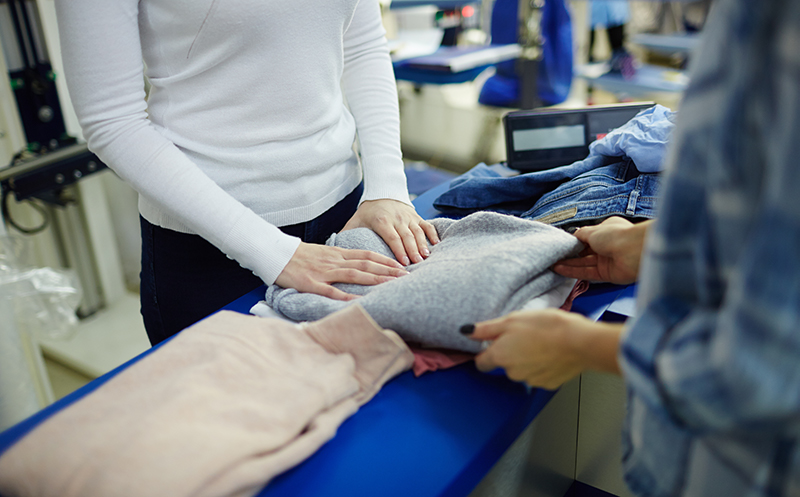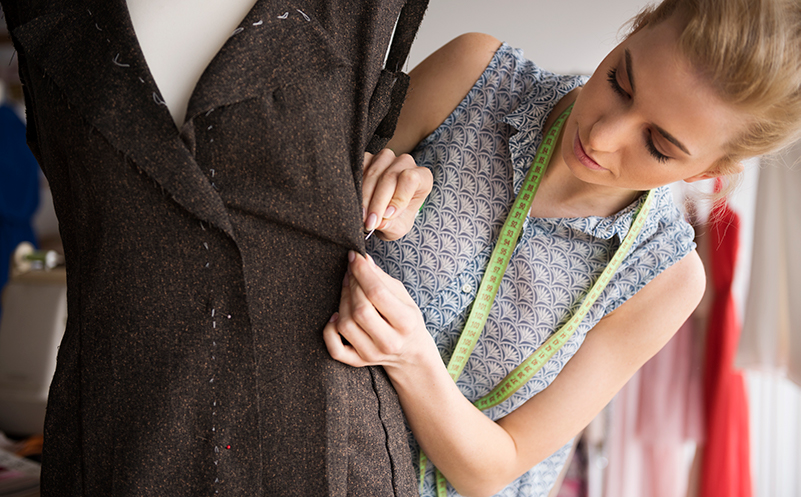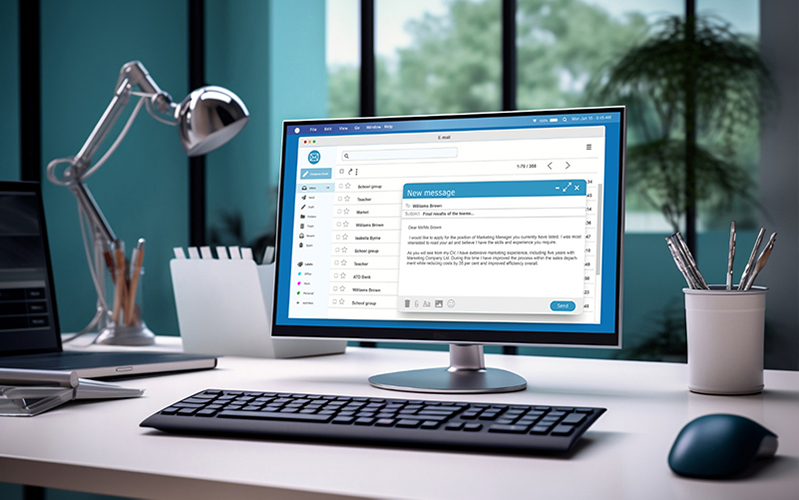As a leading manufacturer of high-end knitwear in China, we’ve partnered with several European brands over the years. One consistent problem we have observed is the excessive amount of sample trash in the development of apparel products. This can be a costly and time-consuming problem that has an effect on both your revenue and your brand’s reputation. In this article, we will discuss five common errors that cause high sample waste and propose practical solutions to address these issues.
1. The Constant Flip-Flopping

One of the greatest obstacles to overcome in the development of apparel is the constant changing of the sandy landscape. It’s common for brands to have an experience that we define as “the constant flipping.” This phenomenon is triggered when important stakeholders, including customers and executives, often alter their opinions of a product’s future. This erratic behavior is extremely detrimental to the design process, this behavior results in costly complications, increased sample waste, and a despondent design team.
When a brand is unsure of its identity, it waves through the entire supply chain. Design teams, which often have tight deadlines on their projects, find themselves having to repeatedly re-design their projects in order to accommodate new requirements. This not only impairs creativity but also has a significant impact on the volume of samples produced. Every new iteration of a design necessitates new patterns, fabrics, and labour, which increases the costs and length of lead times.
Additionally, the constant discussion can adversely affect the design team’s spirits. When designers believe their efforts are being subestimated or subject to random alterations, it can impede innovation and lead to a loss of talent.
To counter the effects of constant rotation, brands should follow these strategies:
- Clearly defined Product Vision: Create a comprehensive description of the target market, product placement, and aesthetic design. This document should serve as a guide to the entire developmental process.
- powerful Leadership: A leading and visionary leader can provide the necessary stability and guidance for a product development team.
- Effective Communication: Communicating openly and honestly with all parties is
- Regular updates and feedback sessions can serve to clarify expectations and prevent misinterpretations.
- Phased Approval Process: Separate the design process into separate phases that have specific approval criteria. This can mitigate the number of late-stage alterations.
2. Loose Approval Standards

Another frequent offender of high sample waste is the application of permissible standards of approval that are loose. When design teams are given too much space without specific guidelines or expectations, they often produce a lot of samples that don’t meet the desired product standards. This not only promotes waste but also impedes the design team’s ability to improve their skills and develop a strong sense of the aesthetic nature of products.
Designers are individual creators, but their talent should be directed, not wasted. When standards for approval are undefined, designers will rely on guesswork to produce multiple samples in the hope of achieving approval. This method is not only ineffective but also poses a risk to the brand’s reputation.
Additionally, lower standards of approval can lead to a lack of accountability. Without expectations that are specific to the sample’s failure, it’s hard to determine the causes of the sample’s failures and take corrective actions.
Brands should promote a more focused and efficient design process that results in fewer samples, quicker time to market, and superior products. To avoid the dangers of loose approvals, brands should:
- Elaborate Design Briefs: Describe the product’s intended audience, specific features, and desired aesthetic. This will give designers a solid principle and will decrease the probability of producing samples that are irrelevant.
- Adequate Sample Evaluation: Create a comprehensive evaluation process that includes detailed comments and numerical values. This will facilitate the identification of areas that need improvement and will prevent the production of unacceptable samples.
- Purchase Design Software: Utilize design software and prototype tools to create realistic visualizations of the ultimate product. This can facilitate a decrease in the necessity of physical samples and a greater overall design endeavour.
3. Ineffective Reviews
A comprehensive and structured review process will guarantee that a product achieves the desired quality and aesthetic goals. Unfortunately, many popular fashion brands have slow, inefficient review processes that lead to issues, confusion, and ultimately, more waste than necessary.
Common errors include including too many stakeholders, having a lack of definitive authority to decide, and having inconsistent feedback. When multiple individuals participate in the review process without having a defined hierarchy or leadership structure, this can lead to conflicting thoughts, delays, and a higher probability of alterations being made late in the development cycle.
To optimize the process of reviews and minimize the amount of sample waste, consider the following strategies:
- Recognize the Key Stakeholders: Know who needs to participate in the review process and be aware of their roles and responsibilities.
- Establish a Review Timeline: Create a chronological timeline of the review process, including deadlines for each step.
- Employing digital technology to share and discuss samples, can simplify communication and reduce mistakes.
- Provide feedback that is specific and constructive during the evaluation process. Avoid ambiguous or conflicting statements.
- Centralized decision making: Designate a single decision maker for each product type in order to avoid ambiguity and delay.
4. Unnecessary Overcontrol

Overcontrol is common in many different industries, and the fashion industry is not alone in this. When executives or managers take on too much of the day-to-day operations of the design team, it can adversely affect creativity, productivity, and ultimately, waste samples.
Overcontrol may take a variety of forms, including asking questions about design decisions, providing excessive guidance, or overriding the team’s recommendations. While it’s probably beneficial to closely observe every aspect of the design process, this approach can impede innovation, promote fear, and have a negative effect on the team’s ability to solve problems on their own.
Designers may be reluctant to divulge their thoughts or take charge, as they believe that mistakes will be made. This can inhibit creativity and lead to a lack of participation in the design process. Additionally, the excessive participation of senior management can impede the development process and lead to problems.
To promote a more productive and creative atmosphere, the design team must be empowered. Here are some approaches:
- Trust and delegation: Grant the design team sufficient autonomy to make decisions in defined areas.
- Establish Precise Goals: Communicate the desired outcome and provide necessary assistance without micromanaging the procedure.
- Constant supervision: Constantly provide feedback and assistance without overzealous interference.
- Recognize and celebrate Success: Recognize and celebrate the design team’s accomplishments to increase morale and promote innovation.
5. Training and Development

A talented and dedicated design team is crucial to reducing the volume of sample waste and producing superior products. Unfortunately, many fashion organizations lack the priority of investing in employee development, which results in a lack of expertise and a higher probability of mistakes.
Without adequate training, designers may lack the necessary abilities to convert design ideas into samples that can be produced. This can lead to multiple re-works, extra time, and higher costs. Additionally, a lack of understanding of industry trends and consumer preferences can impede the design team’s efforts to create products that are commercially successful.
To create a successful design team, it’s essential to devote funds to ongoing training and development. Here are some of the most important strategies:
- Skills: Assess the specific abilities and knowledge requirements of the design team.
- Customized training: Create training programs that address the identified requirements, including areas like technical design, fabric knowledge, and predictions of upcoming trends.
- Mentorship Programs: A pair of experienced designers will serve as a guide for a less experienced team member, this will help to facilitate knowledge transfer and developmental skills.
- Industry exposure: Allow designers to participate in events dedicated to industry, trade shows, and conferences in order to stay aware of the latest trends and methods.
- Constantly Learning Culture: promote a culture of constant learning by encouraging employees to pursue additional education and certification.
Conclusion
Reducing the amount of sample waste is crucial to the achievement of greater sustainability and profitability in the fashion industry. By addressing the five critical issues mentioned in this blog post – Constant Flip-Flopping, loose standards of approval, ineffective processes of review, micromanagement, and a lack of training – brands can greatly enhance their productivity in developing products and reduce their environmental impact.
Implementing strategies like communication clarity, defined roles, and ongoing training can lead to a more streamlined and cooperative design process.
Guoou Fashion specializes in addressing the challenge of insufficient designer professionalism in the sweater industry. With over 3 yarn solutions and a professional review team to tackle intricate details and technical issues, Guoou Fashion offers a comprehensive approach to enhancing design capabilities.
Are you ready to optimize your product development process and reduce sample waste?
Contact us today to learn how we can support your brand’s success.




 English
English Deutsch
Deutsch Français
Français Italiano
Italiano Español
Español Русский
Русский Polski
Polski Nederlands
Nederlands Svenska
Svenska

